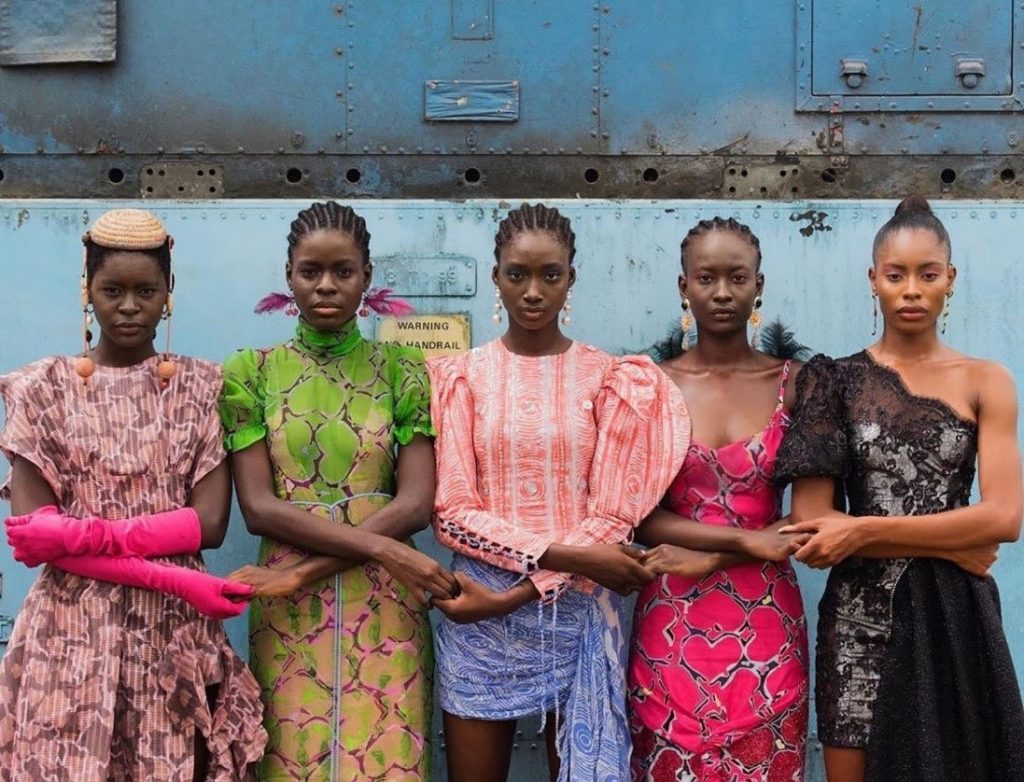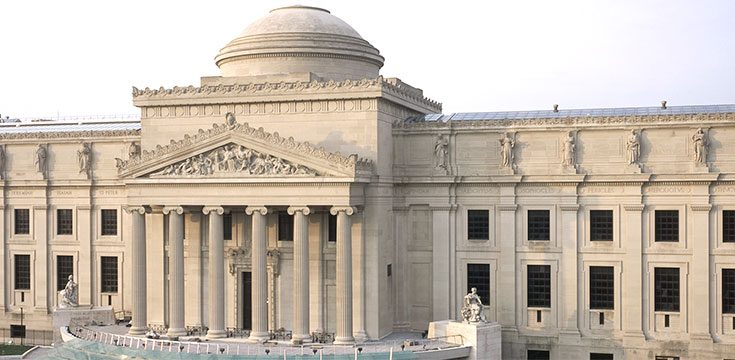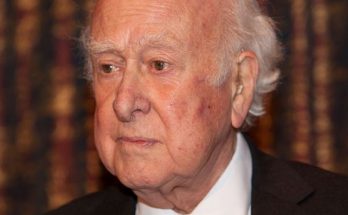Press Release
| CMEDIA: Making its North American debut in Brooklyn, the exhibition features over 180 works, including fashion, music, film, visual art, and photography, as well as textiles and jewelry from the Museum’s Arts of Africa collection. On view June 23–October 22, 2023 |

| Celebrating the outstanding creativity, ingenuity, and global impact of African fashions from the start of the independence era to today, Africa Fashion is the largest-ever presentation of this subject in North America. Through works by iconic designers and artists from the mid-twentieth century to the present, the exhibition illuminates how fashion, alongside the visual arts and music, played a pivotal role in Africa’s cultural renaissance during its liberation years, and how those elements laid the foundation for today’s fashion revolution. The exhibition is organized by the V&A and has been adapted for the Brooklyn Museum by Ernestine White-Mifetu, Sills Foundation Curator of African Art, and Annissa Malvoisin, Bard Graduate Center / Brooklyn Museum Postdoctoral Fellow in the Arts of Africa. The Brooklyn presentation is supplemented by works from several of the Museum’s collections: Arts of Africa, Photography, Arts of the Islamic World, Contemporary Art, and Egyptian, Classical, and Ancient Near Eastern Art. Home to one of the country’s most dynamic African diasporic communities, Brooklyn provides the perfect setting to explore the richness and diversity of the continent’s many histories and cultures. “This exhibition is an important presentation of African creativity that highlights not only fashion but also the dynamic diversity of talent coming from the continent,” says White-Mifetu. “I am excited that the Brooklyn Museum will be able to host Africa Fashion, and I am elated that our New York visitors will have the opportunity to engage with the creative production of Africa in new ways.” “Fashion is both multidimensional and a fabulous creative statement. Africa Fashion encapsulates this with beautifully vivid and interlocking perspectives. Music, art, cultural identity, and material culture are emphasized to create a rich sensorial experience,” says Malvoisin. Organized thematically, the exhibition features immersive displays of garments, textiles, photographs, literature, sketches, music, film, and catwalk footage. More than forty designers and artists from twenty African countries are represented, many of whose works are on view for the first time in the United States. The presentation includes fashions by mid-twentieth-century designers as well as works by a new generation of designers, collectives, and fashion photographers working in Africa today. Africa Fashion begins with the independence era, from the 1950s through the 1990s. This period inspired a dramatic political, social, and cultural shift throughout the continent. Pan-Africanism surged, instilling a unified sense of identity—with fashion and artistic expression at its heart. The Cultural Renaissance section explores this time of radical change through fashion, photography, books, and ephemera such as protest posters, vintage magazine covers, and iconic album cover art. In Politics and Poetics of Cloth, visitors can explore the ways in which the making and wearing of Indigenous cloth became a strategic political act. Textiles from the Museum’s Arts of Africa collection complement a display of wax prints, commemorative cloth, àdìrẹ, kente cloth, and bògòlanfini. The first generation of African designers to gain global attention is highlighted in the Vanguard section. Works by Kofi Ansah (Ghana), Naima Bennis (Morocco), Shade Thomas-Fahm (Nigeria), Chris Seydou (Mali), and Alphadi (Niger), dating from the mid to late twentieth century, are shown together for the first time in the United States alongside a dynamic installation of fashion photography from the period. Capturing Change presents portraits that chronicle the independence years and document the growing sense of agency and pride in being both Black and African. As photography became more affordable, pictures taken in studios and domestic spaces proliferated. Studio portraits by artists such as Seydou Keïta (Mali) and Malick Sidibé (Mali), drawn from the Museum’s collection, as well as fashion photography by James Barnor (Ghana) and family photographs exemplify this expansion. Visitors are invited to directly engage with the material by sharing their own individual and family portraits that showcase styles from Africa’s independence years. Through these contributions of self-fashioning, the diasporic community will become an integral part of the presentation. The section Cutting Edge showcases a new generation of fashion designers and creatives with examples of couture and ready-to-wear garments, and adornment. Organized around concepts such as “Afrotopia,” “Artisanal,” “Co-creation,” “Provocation,” “Minimalist,” and “Mixologist,” this section displays designs by dozens of contemporary artists and collectives whose trailblazing collections hark back to their rich and specific cultural heritage. For example, South Africa–based designer Thebe Magugu’s Alchemy collection, a collaboration with stylist and healer Noentla Khumalo, focuses on African spirituality and relationships with ancestors. Adebayo Oke-Lawal (Nigeria) and his label Orange Culture challenge traditional notions of masculinity by introducing fabrics and colors perceived as “feminine” to menswear. This discourse continues through the self-portraiture of Gouled Ahmed (Djibouti), a costume designer, stylist, and photographer. Ahmed’s sartorial work also rebels against traditional cultural gender norms, specifically challenging the lack of representation of nonbinary Black Muslims. Pieces of cowrie jewelry by Lafalaise Dion (Côte d’Ivoire) explore the shell’s legacy as a symbol of wealth, prosperity, and fertility, as well as a contemporary accessory of adornment. Morocco-based designer Maison ARTC’s piece A Dialogue between Cultures is embroidered with the hand of Fatima (hamsa), a symbol of good luck, and was made specially for Africa Fashion. Through the Photographer’s Lens highlights the power of contemporary photography and film to foster creative communities, give a platform to underrepresented artists, and explore a new African identity. Collection works by Zanele Muholi (South Africa) and Omar Victor Diop (Senegal) are featured alongside pieces by other contemporary photographers, such as Stephen Tayo (Nigeria), Sarah Waiswa (Uganda), and Victoire Douniama (Republic of the Congo). The exhibition concludes with Global Africa. By exploring how the digital world accelerated the expansion of Africa’s fashion industry and influence, this section calls attention to the worldwide impact of African creativity. Exhibition CatalogueThe exhibition is accompanied by a dedicated exhibition catalogue published by V&A Publishing. The catalogue is edited by Christine Checinska, with contributions from Omoyemi Akerele, Amine Bendriouich, Gus Casely-Hayford, Sunny Dolat, Bonnie Greer, Monica L. Miller, Elisabeth Murray, Njoki Ngumi, Hadeel Osman, and Roslyn A. Walker, and a new foreword by Anne Pasternak, Shelby White and Leon Levy Director, Brooklyn Museum. Exhibition ShopThrough the efforts of the Brooklyn Museum’s Entrepreneur in Residence, Rachel Shechtman, Africa Fashion will feature a partnership with ALÁRA, a Lagos-based luxury lifestyle concept store, to create a unique exhibition shop experience. Founded in 2015 by Reni Folawiyo and designed by architect Sir David Adjaye, ALÁRA blends fashion, design, cuisine, and culture and was recognized by the Financial Times as among the world’s best boutiques. For Africa Fashion, Folawiyo will curate the exhibition shop with designs from across the continent, marking ALÁRA’s global debut. Exclusive merchandise, including items by designers featured in Africa Fashion, as well as rotating trunk shows and programming will enrich the retail experience throughout the exhibition’s run. In addition to highlighting brands and designers from Africa, the Brooklyn Museum Shop will offer goods from Brooklyn, including but not limited to kids’ toys, housewares, jewelry, and books. Ticketing InformationTimed tickets for Africa Fashion go on sale April 18, 2023. Museum Members can reserve their free tickets beginning April 11, 2023. To become a Member, visit www.brooklynmuseum.org/join or email membership@brooklynmuseum.org. Ticket prices are as follows:Wednesday–Friday: adults: $20; seniors: $13; students: $13; visitors with disabilities: $13; children: $8Saturday–Sunday: adults: $25; seniors: $17; students: $17; visitors with disabilities: $17; children: $10 Exhibition CreditThe Brooklyn Museum presentation of Africa Fashion is organized by Ernestine White-Mifetu, Sills Foundation Curator of African Art, and Annissa Malvoisin, Bard Graduate Center / Brooklyn Museum Postdoctoral Fellow in the Arts of Africa, with Catherine Futter, Director of Curatorial Affairs and Senior Curator of Decorative Arts, and Matthew Yokobosky, Senior Curator of Fashion and Material Culture, Brooklyn Museum. Created by the V&A—touring the world.  Lead sponsor  Major support provided by ALÁRA. Press Contact: press@brooklynmuseum.org |
#TheBrooklynMuseum; #AfricaFashion; #ModernContemporaryAfricanFashion; #June23toOctober222023





